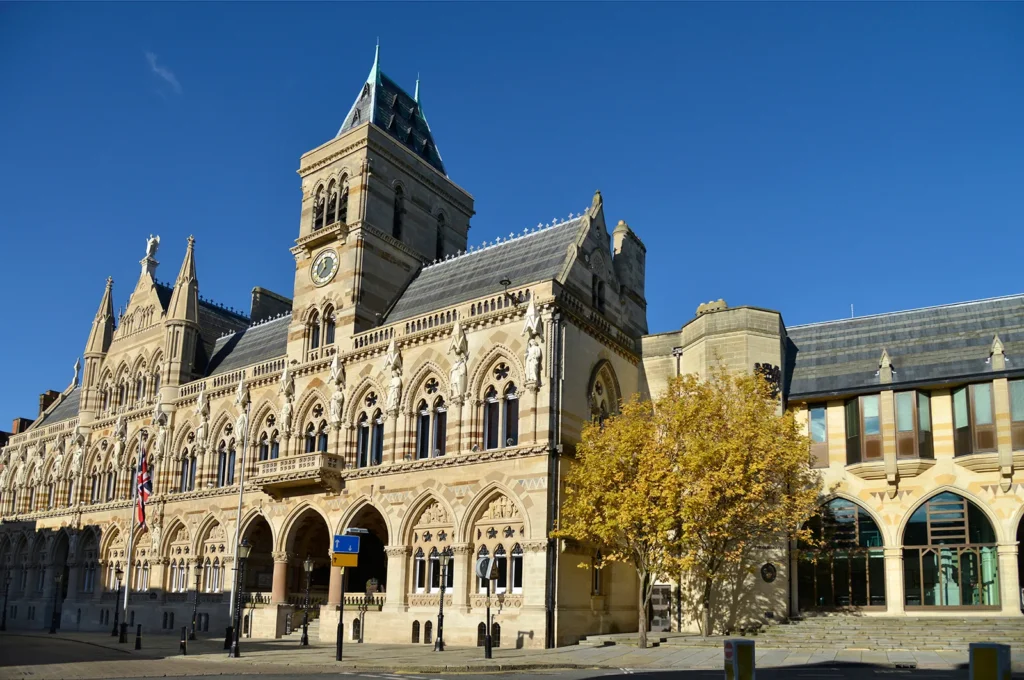Edward Godwin: Pioneer of Victorian Gothic Revival Architecture

Edward William Godwin remains one of the most fascinating figures of 19th-century British design. A man of many talents, he made his mark not only as an architect but also as a furniture designer, interior decorator, and advocate of the Aesthetic Movement. His ability to merge functionality with artistic beauty gave him a unique place in Victorian society, a time when architecture and design were deeply connected to social values and cultural change.
Godwin’s influence stretched beyond the walls of his buildings and homes; he became an innovator who challenged the conventions of Gothic Revival architecture while helping to lay the groundwork for modern design. His works combined traditional craftsmanship with new approaches to form, space, and style. This mixture of old and new positioned him as a bridge between the historic richness of the 19th century and the emerging modernism of the 20th. Understanding his life and works not only provides insight into Victorian design but also demonstrates why his legacy remains relevant to this day.
Early Life and Background
Edward Godwin was born in Bristol, England, in 1833, into a society brimming with cultural, industrial, and intellectual growth. While details of his early education are limited, it is clear that from a young age, he showed an inclination toward art and architecture. Growing up in the midst of the Industrial Revolution exposed him to both the grandeur of historic architecture and the growing need for innovative design solutions. This environment laid the foundation for his later career.
As a young man, Godwin developed a passion for the Gothic Revival, a style that sought to revive medieval forms in a modern context. Inspired by writers such as John Ruskin and Augustus Pugin, he embraced the idea that architecture should not only serve practical needs but also embody moral and spiritual values. His early influences gave him a sense of purpose: to create works that balanced artistic vision with social meaning. By the mid-19th century, Godwin was establishing himself as a promising architect whose career would soon merge with broader cultural movements in Britain.
Edward Godwin as an Architect

Godwin began his architectural career by designing churches, civic buildings, and private homes that reflected his Gothic Revival leanings. One of his earliest and most notable projects was Northampton Town Hall, completed in 1864. This building, with its dramatic pointed arches, decorative stonework, and bold symmetry, became a symbol of his architectural style and remains one of his masterpieces. The hall displayed his ability to blend medieval inspiration with practical civic function, cementing his reputation as a gifted architect.
Despite his early success, Godwin was not content to remain confined to traditional Gothic styles. As his career progressed, he experimented with new forms and design philosophies. His architecture became less about strict historic imitation and more about personal expression. By the 1870s, Godwin was already moving beyond Gothic Revival toward a style that emphasized simplicity, lightness, and elegance. This shift mirrored his growing interest in the Aesthetic Movement and set the stage for his eventual pivot toward furniture and interior design. Although architecture was his first profession, it was only one part of his broader vision for art and design.
Edward Godwin and the Aesthetic Movement
One of Godwin’s most important contributions to the movement was his approach to interiors. He designed spaces that were not just functional but also visually and emotionally appealing. Collaborating with leThe Aesthetic Movement, which flourished in the late 19th century, emphasized the idea of “art for art’s sake.” It rejected the heavy moralism of earlier Victorian culture and instead sought beauty, refinement, and artistic freedom in everyday life. Godwin quickly became one of its leading champions. His designs reflected the Aesthetic Movement’s philosophy of harmony, proportion, and elegance rather than strict adherence to historical models.
ading figures of the movement, such as James McNeill Whistler, he helped to create a new aesthetic vocabulary. His interiors often featured clean lines, carefully chosen colors, and a focus on overall harmony rather than clutter or excess decoration. In this way, Godwin helped shape Victorian tastes, turning everyday surroundings into works of art. His involvement in the Aesthetic Movement marked a turning point in his career and positioned him as one of the most influential designers of his time.
Furniture and Interior Design Legacy
While Godwin made his name as an architect, his enduring legacy lies in his furniture and interior design. By the 1870s, he had shifted his focus toward designing furniture that embodied simplicity, elegance, and practicality. Unlike the heavily ornate pieces typical of the Victorian period, Godwin’s furniture was strikingly modern in its minimalism. He drew inspiration from Japanese design, which emphasized clean lines, geometric shapes, and a sense of balance.
Godwin’s furniture pieces, such as sideboards, cabinets, and tables, became widely admired for their timeless appeal. Many of his designs were produced in partnership with leading manufacturers, ensuring they reached a broad audience. His ability to merge aesthetic beauty with functional utility made his furniture stand out, and it is often seen as a precursor to 20th-century modernist design. Today, his works are preserved in major museums and collections, where they continue to inspire designers seeking a balance between tradition and innovation. Through his furniture, Godwin demonstrated that good design could elevate the quality of daily life, a principle that resonates strongly in contemporary design philosophy.
Personal Life and Relationships
Edward Godwin’s personal life was as colorful as his career. His most famous relationship was with the celebrated actress Ellen Terry, with whom he lived during the 1860s and 1870s. Their partnership was unconventional for the time, as they were not legally married, but it had a profound impact on both their lives. Godwin designed their home together, creating interiors that reflected his artistic vision and their shared appreciation for beauty and creativity.
Beyond his relationship with Terry, Godwin moved in artistic circles that included painters, writers, and designers. His social network connected him with influential figures such as Whistler, further reinforcing his role in the Aesthetic Movement. However, his unconventional lifestyle sometimes brought criticism and controversy, particularly in conservative Victorian society. Despite these challenges, his personal life was deeply intertwined with his artistic pursuits, showing that for Godwin, design was not just a profession but a way of life.
Lasting Impact and Legacy
Edward Godwin passed away in 1886 at the age of 53, but his influence has continued well into the modern era. His architecture, though less widely known today, represents an important chapter in the development of Victorian civic design. His furniture and interiors, however, remain his greatest contribution, bridging the gap between ornate Victorian styles and the clean lines of modernism.
Godwin’s ideas about simplicity, balance, and the integration of beauty into daily life have influenced generations of designers. His works are celebrated in exhibitions, design history courses, and museum collections around the world. For many, he represents the spirit of innovation and creativity that defined the Victorian age while anticipating the values of modern design. In recognizing his legacy, we see how Edward Godwin helped shape not only his own time but also the design philosophies that continue to guide us today.
Conclusion
Edward Godwin was more than an architect or furniture maker; he was a visionary who sought to unify art and life. From his Gothic Revival architecture to his Japanese-inspired furniture, he consistently pushed boundaries and redefined Victorian aesthetics. His personal and professional life reflected a dedication to beauty, harmony, and innovation. Today, his works continue to resonate with those who value the intersection of history, design, and modernity. Godwin’s legacy is a reminder that great design is timeless, transcending its era to inspire future generations.
FAQs About Edward Godwin
Who was Edward Godwin and why is he important?
Edward Godwin was a 19th-century British architect and designer best known for his role in the Gothic Revival and the Aesthetic Movement. He left a lasting legacy in both architecture and furniture design.
What architectural styles did Edward Godwin work in?
He began in the Gothic Revival style but later moved toward more simplified, modern approaches aligned with the Aesthetic Movement.
What was Edward Godwin’s connection to the Aesthetic Movement?
Godwin was a key figure in the movement, designing interiors and furniture that emphasized beauty, harmony, and simplicity.
Did Edward Godwin design furniture as well as buildings?
Yes. His furniture designs, inspired by Japanese aesthetics, remain some of his most enduring works.
Where can Edward Godwin’s works be seen today?
His designs are preserved in museums such as the Victoria and Albert Museum in London, as well as in private collections worldwide.
How did Edward Godwin influence modern interior design?
Through his emphasis on simplicity, balance, and functional beauty, Godwin paved the way for modernist principles in design.
What was his relationship with Ellen Terry?
Godwin had a long and influential partnership with actress Ellen Terry, with whom he shared both a personal life and creative collaborations.
You May Also Read: How Deep Is Lough Neagh



